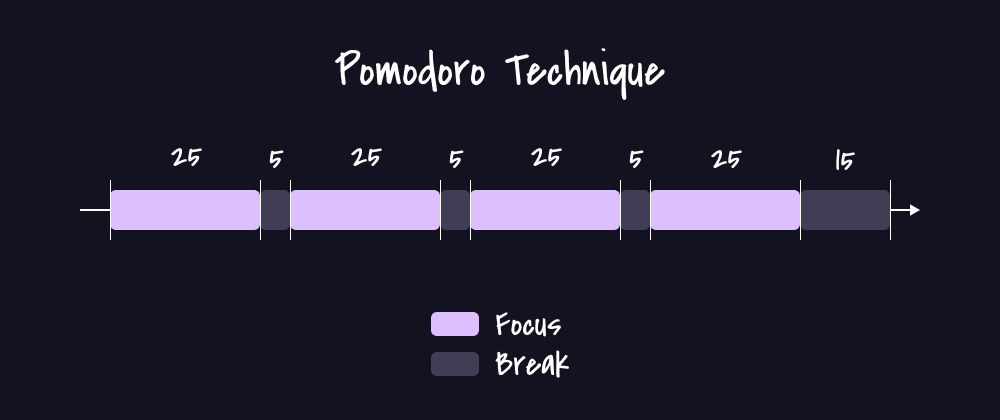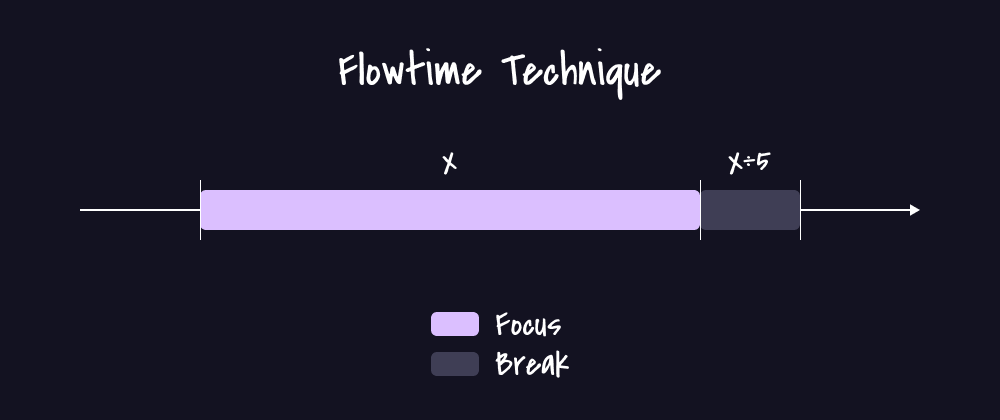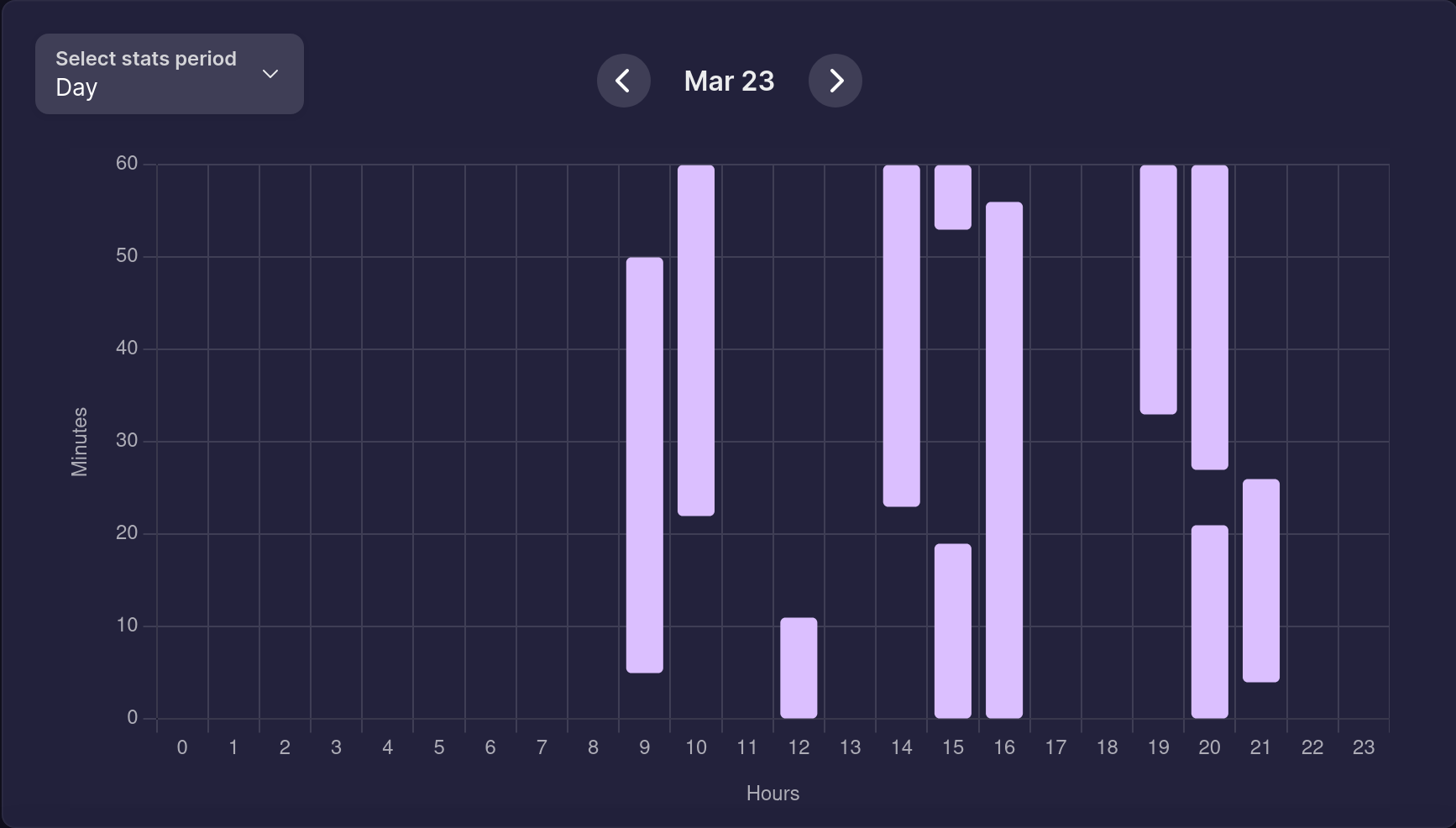Flowtime Technique: Pomodoro alternative for flow state
Do you keep finding the Pomodoro Technique ineffective for your work? If so, you’re not alone. The Pomodoro Technique is a popular time management method, but it might not be the best fit for everyone.
The good news is that there’s an alternative that might work better for you — the Flowtime Technique. Before we dive into it, let’s first understand what Pomodoro is and why it might not work for you.
What’s Pomodoro Technique?
The Pomodoro Technique is a time management method that divides work into 25-minute focused sessions followed by 5-minute breaks. After completing 4 sessions, you take a longer break of 15-30 minutes.

The Pomodoro Technique is known for its simplicity. It helps you break down tasks into manageable intervals and avoid burnout by incorporating regular breaks.
Why Pomodoro might not work for you
While the Pomodoro Technique is popular, it might not be the best fit for everyone. Here’s why:
-
Interruption of Flow State: Flow state is a mental state where you’re fully immersed in a task, feeling focused and productive. In this state, you might even not aware of the passage of time. However, the Pomodoro Technique’s rigid 25 minutes timer can interrupt your flow state by forcing you to take breaks.
-
Variable Task Length: Tasks vary in complexity and often don’t neatly fit into 25-minute intervals. Some tasks might require longer periods of focused work, while others might be completed in shorter bursts.
-
Context Switching: Frequent breaks can lead to context switching. When switching from break mode to work mode, you might need some time to get back into the flow of your task, which can reduce your productivity.
The alternative - Flowtime Technique
The Flowtime Technique a.k.a. Flowmodoro is a flexible alternative to the Pomodoro Technique.
Unlike the Pomodoro Technique, the Flowtime Technique counts up instead of counting down when you are focusing. It allows you to work until you naturally feel the need for a break. Then, when you decide to rest, you simply stop the timer, divide the focus time by 5, and set a countdown timer for your break.

This method respects your flow state and adapts to different task lengths.
How to implement the Flowtime Technique
Using a stopwatch and timer
Implementing the Flowtime Technique is simple and can start with tools as basic as a stopwatch and timer app. Here’s a basic guide:
-
Pick one task: Begin by selecting a single task to focus on. This ensures that your attention isn’t divided across multiple tasks.
-
Start the work: Once your task is chosen, start the stopwatch. This marks the beginning of your focused work period. Dive into your task without any distractions.
-
Stop the work: Keep working until you naturally feel the need for a break. This could be when you feel your concentration waning or you’ve reached a logical stopping point in your task. Then, stop the stopwatch. This time recorded is your focused work duration.
-
Take a break: Divide the focused work duration by 5 to determine the length of your break. Set a countdown timer for this duration and take a break. This ensures that you rest and prepare for the next focused work session.
You can repeat this cycle again and again.
Using productivity tools
While using a stopwatch and timer works well, it is cumbersome to do this manually every time. To make things easier, you can use Flowmodor to automate the workflow. It also provides detailed stats and insights to help you understand your work patterns better:

Flowtime Technique tips
While the workflow of the Flowtime Technique is simple, here are some tips to help you make the most of it:
Tweak the work-break ratio
The Flowtime Technique is highly adaptable and can be customized to suit your needs. For example you don’t have to always divide the focused work duration by 5 for your break. You can choose a different ratio that works best for you.
When you are in the morning and feeling fresh, you might want to work for longer periods before taking a break. In this case, you can set work-break ratio to 6:1 or 7:1. On the other hand, when you are in the afternoon and feeling tired, you might want to have more time for breaks. In this case, you can set work-break ratio to 4:1 or 3:1.
By adjusting the work-break ratio, you can optimize your productivity based on your energy levels through the day.
Avoid electronic devices during breaks
During your breaks, try to avoid electronic devices like your phone or computer. Instead, use this time to relax, stretch, or take a short walk. This helps you recharge and prevents burnout.
Here are more things you can do during breaks without electronic devices.
Conclusion
The Flowtime Technique is a flexible alternative to the Pomodoro Technique that respects your flow state and adapts to different task lengths. This method can help you maintain your productivity and focus without the rigidity of traditional time management techniques. Give it a try and see how it works for you!